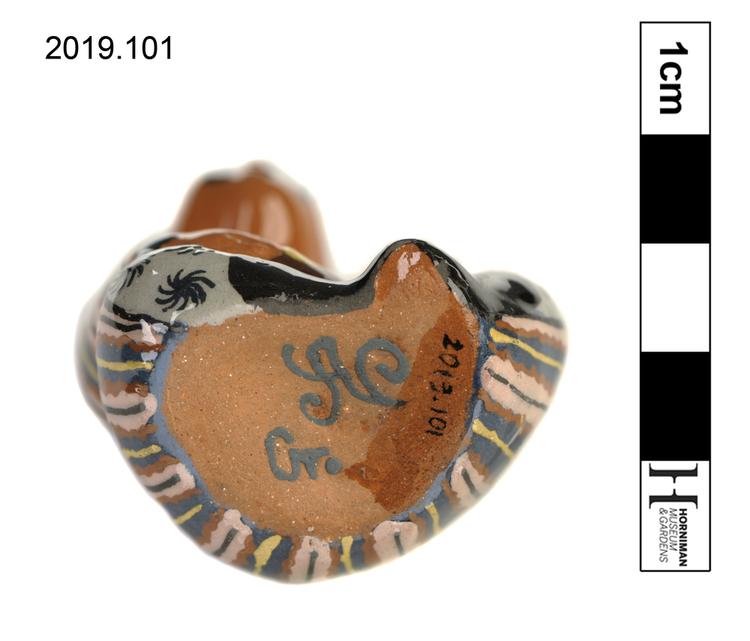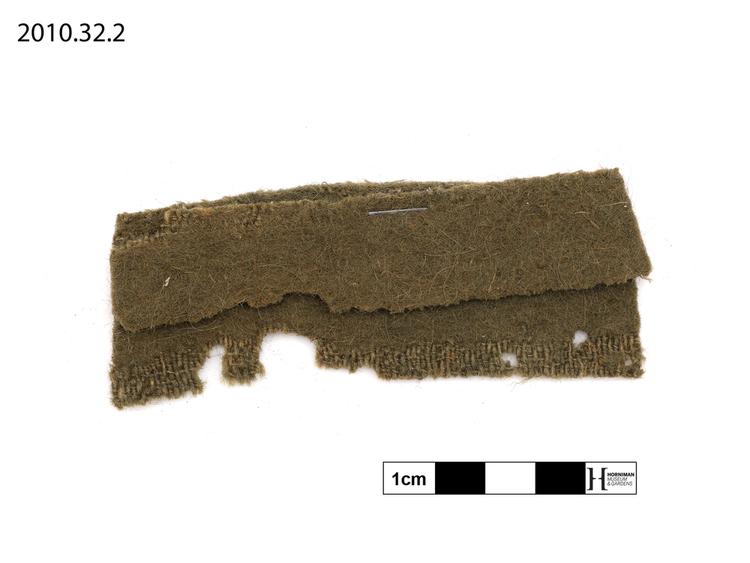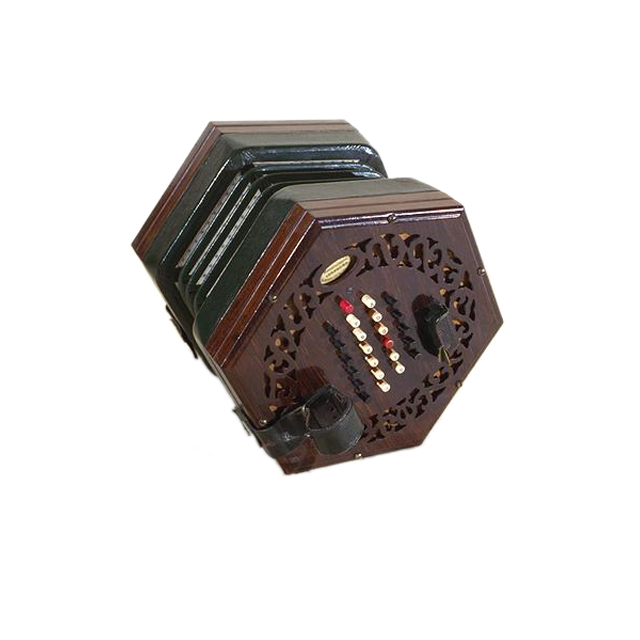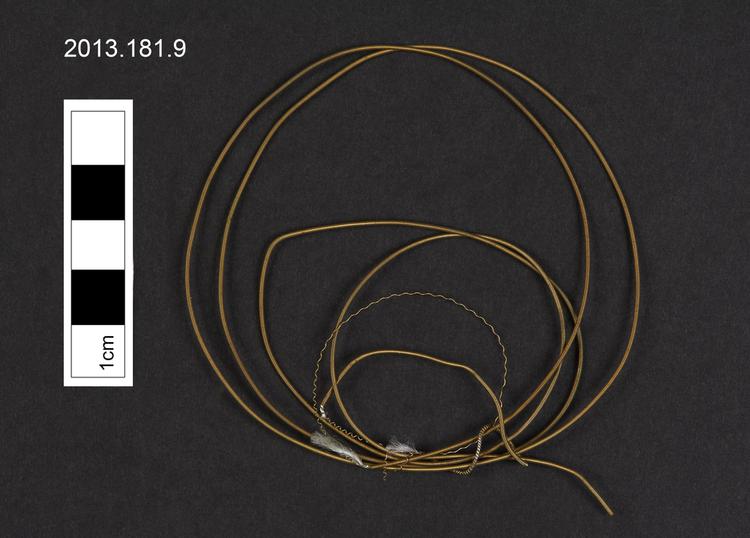Thod rnga, cranium drum. Two human crania, attached at the crowns. Skin membranes glued to each side with a 12 - 15 mm overlap around the outsides. Cuts in the bone follow the edges of the membranes, suggesting they were glued into place and then cut to size. The membranes are not flat, as they follow the uneven shapes of the cranium rims. A red fabric band approx. 20 mm wide is wrapped around the join of the crania, the two sides of which are tied at the top and go on to form a large loop. A hole in the fabric in the loop shows a similar fabric, but in black, inside. Two pellet beaters are attached with a wound thread made from fabric, one to each side of the instrumnet. These are attached to the red fabric. The pellets are wrapped in a linen-like fabric, which is stiched into place.
Hourglass drums, called damaras, are used in a number of rituals associated with Tibetan Buddhism. The thod-rnga is a specific type of damara made from the crowns of two human skulls ('thod' meaning 'skull' in Tibetan). Traditionally, the throd-rnga is made from the skulls of two people of opposite sexes who died violent deaths. The drum is considered to have a powerful effect in protecting against evil.


































































































































































































































































































































































































































































































































